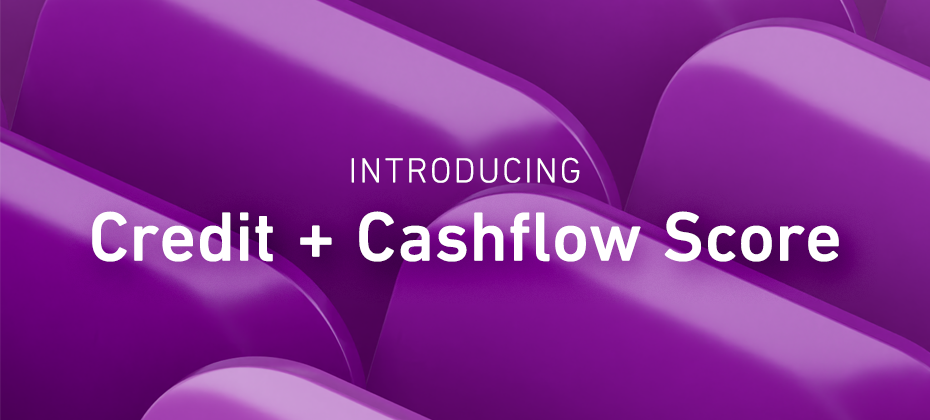
For decades, the credit scoring system has relied on traditional data that only examines existing credit captured on a credit report – such as credit utilization ratio or payment history – to calculate credit scores. But there’s a problem with that approach: it leaves out a lot of consumer activity. Indeed, research shows that an estimated 28 million U.S. adults are “credit invisible,” while another 21 million are “unscorable.”1
But times are changing. While conventional credit scoring systems cannot generate a score for 19 percent of American adults,1 many lenders are proactively turning to expanded FCRA-regulated data – or “alternative data” – for solutions.
Types of expanded FCRA-regulated data
By tapping into technology, lenders can access expanded FCRA-regulated data, which offers a powerful and complete view of consumers’ financial situations.
Expanded public record data
This can include professional and occupational licenses, property deeds and address history – a step beyond the limited public records information found in standard credit reports. Such expanded public record data is available through consumer reporting agencies and does not require the customer’s permission to use it since it’s a public record.1
“Experian has partnerships with these agencies and can access public records that provide insight into factors like income and housing stability, which have a direct correlation with how they’ll perform,” said Greg Wright, Chief Product Officer for Experian Consumer Information Services. “For example, lenders can see if a consumer’s professional license is in good standing, which is a strong correlation to income stability and the ability to pay back a loan.”
Rental payment data
Experian RentBureau draws updated rental payment history data every 24 hours from property managers, electronic rent payment services and collection companies. It can also track the frequency of address changes.
“Such information can be a good indicator of risk,” said Wright. “It allows lenders to make informed judgments about the financial health and positive payment history of consumers.”
Consumer-permissioned data
With permission from consumers, lenders can look at different types of financial transactions to assess creditworthiness. Experian Boost™, for example, enables consumers to factor positive payment history, such as utilities, cell phone or even streaming services, into an Experian credit file.
“Using the Experian Boost is free, and for most users, it instantly improves their credit scores,” said Wright. “Overall, those ‘boosted’ credit scores allow for fairer decisioning and better terms from lenders – which gives customers a second chance or opportunity to receive better terms.”
Financial Management Insights
Financial Management Insights considers data that is not captured by the traditional credit report such as cash flow and account transactions. For instance, this could include demand deposit account (DDA) data, like recurring payroll deposits, or prepaid account transactions.
“Examining bank account transaction data, prepaid accounts, and cash flow data can be a good indicator of ability to pay as it helps verify income, which gives lenders insights into consumers’ cash flow and ability to pay,” Wright added.
Clarity Credit Data
With Experian’s Clarity Credit Data, lenders can see how consumers use expanded FCRA-regulated data along with their related payment behavior. It provides visibility into critical non-traditional loan information, including more insights into thin-file and no-file segments allowing for a more comprehensive view of a consumer’s credit history.
Lift Premium™
By using multiple sources of expanded FCRA-regulated data to feed composite scores, along with artificial intelligence and machine learning, Lift Premium™ can vastly increase the number of consumers who can be scored. For example, research shows that Lift Premium™ can score 96 percent of American adults – a significant increase from the 81 percent that are scorable with conventional scores relying on only traditional credit data. Additionally, such enhanced composite scores could enable 6 million of today’s subprime population to qualify for “mainstream” (prime or near-prime) credit.1
How is expanded FCRA-regulated data changing the credit scoring system?
The current credit scoring system is rapidly evolving, and modern technology is making it easier for lenders to access expanded FCRA-regulated data. Indeed, this data disruption is changing lender business in a positive way.
“When lenders use expanded credit data assets, they see that many unscorable and credit invisible consumers are in fact creditworthy,” said Wright. “Layering in expanded FCRA-regulated data gives a clearer picture of consumers’ financial situation.”
By expanding data assets, tapping into artificial intelligence and machine learning, lenders can now score many more consumers quickly and accurately. Moreover, forward-thinking lenders see these expanded data assets as offering a competitive edge: it’s estimated that modern credit scoring methods could allow lenders to grow their pool of new customers by almost 20 percent.1
Case study: Consumer-permissioned data
To date, over 9 million people have used Experian Boost. The technology uses positive payment history as a way to recognize customers who exhibit strong credit behaviors outside of traditional credit products. “Boosted” consumers were able to add on average 14 points to their FICO scores in 2022 so far, making many eligible for additional financial products with better terms or better product offerings. Active Boost consumers, post new origination performed on par or better than the average U.S. originator, consistently over time.
“In other words, having this additional lens into a consumer’s financial health means lenders can expand their customer base without taking on additional credit risk,” explains Wright.
The bottom line
The world of credit data is undergoing a revolution, and forward-thinking lenders can build a sound business strategy by extending credit to consumers previously excluded from it. This not only creates a more equitable system, but also expands the customer base for proactive lenders who see its potential in growing business.


